|
THE REAL WOOD GUIDE COMMERCIAL TIMBERS THE UK IMPORTS MOST OF ITS WOOD NEEDS Out of total consumption of solid wood and wood based panels of the order of 18 million cubic metres a year, the UK imports around 14 millions. About 80% of our wood is supplied by other countries. Of total consumption of some 18 million cubic metres, over 16 million are of softwood. About 90% of the wood used in the UK comes from the coniferous forests of colder temperate regions. At present the UK can only provide about 20% of the nation's needs. By the end of the century this will have increased, but for the foreseeable future this country will need to rely on other nations to manage their timber resources and supply us with wood. UK forests and plantations provide mainly softwoods, including Larch, Spruce, Sitka Spruce, Scots Pine, Douglas Fir and some other species. The principal hardwoods are Oak and Beech, plus Ash, Sycamore and others. COMMERCIAL SPECIES USED IN THE UK This list of species covers the principal timbers used in the UK. Only a brief description is given. The choice of species is governed by the need to ensure that the final product will live up to the expectations of the user. There can be a variety of technical factors, including strength, durability, stability, flexibility, abrasion resistance, sizes, ease of nailing, screwing, gluing and machining, and suitability for turning and shaping. In addition there may be rather more aesthetic factors like grain and colour. Temperate softwoods and hardwoods reflect the seasons with periods of fast and slow growth, giving rise to annual growth rings, whereas tropical timber grows more evenly. This too affects suitability for use. Other influences include assessment of desired performance against cost, and whether there is a sufficiently large maintained and reliable supply to meet needs. For example, softwoods for construction work in the UK for items like joists, roof trusses and rafters, are used in very large quantities. Where a furniture factory gears itself to a particular range of units requiring consistency of colour and grain, then it needs to be assured of continuity for customers who wish to buy further items to match what they already may have. At the other end of the scale are the very small volumes of wood used by craftsmen to produce individual pieces of work, and where there is freedom to change from one timber to another. In this sector it is possible to use more unusual woods like the ebonies and rosewoods, boxwood and some of the fruit woods like apple. But for large volume production there could not be adequate supply of fruit woods. The process of finding alternative species for a particular end use requires careful appraisal of technical characteristics and volumes and sizes which are available. Logging companies in the tropics have self imposed minimum diameter limits below which they do not fell because it is uneconomic. Species existence is not endangered because smaller diameter specimens remain and will develop -provided of course that the forest is protected against clearance for agriculture and further inroads until it has recovered for the next harvest. Because softwoods form the bulk of the timber used in Britain, they are described first. SOFTWOODS AND HARDWOODS The classification of softwood and hardwood does not in practice always reflect comparative hardness. The distinction is botanical and relates to the needle leaved coniferous softwoods (gymnosperms) and to the broad leaved hardwoods (angiosperms). In practice it is possible to have some physically softer hardwoods like Balsa from South America and Wawa from Africa, and some physically extra hard softwoods like the Pitchpines. The UK Building Research Establishment lists over 50 species in its A Handbook of Softwoods. Only about 14 or so of these are used in any significant quantity in the UK. The Handbook of Hardwoods, also from the UK Building Research Establishment, lists about 70 temperate species, and over 140 tropical. The UK takes only a proportion of these in any significant quantity. It is impossible to be exact, because import statistics do not record every individual species, but it is estimated that 35 to 40 temperate and 50 tropical timbers have been utilised in the UK. The ATIBT (Association Technique Internationale des Bois Tropicaux) lists over 600 tropical species of existing or potential commercial usefulness, but relatively few are utilised on any scale so far. PRINCIPAL SPECIES USED IN THE UK SOFTWOODS Corsican Pine Pinus nigra. Grows widely in southern Europe and produces timber similar to Scots Pine for general utility work.
Hemlock Tsuga heterophylla. Western Hemlock. A major commercial North American species which can produce large sized wood and is widely used in building and construction. Larch Larix decidua. Grows in USSR forests and in UK plantations, it is one of the heavier softwoods with good durability. Lodgepole Pine Pinus latifolia/P. contorta. An important commercial species originating in North America but also grown in UK plantations. Maritime Pine Pinus pinaster. More commonly called Portuguese Maritime Pine because of its principal source of supply. A resinous species used mostly for lower grade utility purposes.
Pencil Cedar Juniperus virginiana/J. procera. The first of these is North American, the other from East Africa. Specialised end use; very straight grained, imported in comparatively small volumes. Radiata Pine Pinus radiata. A native of the West Coast of North America, it has become a major softwood plantation species in the southern hemisphere: New Zealand, Australia, and elsewhere.
Sitka Spruce Picea sitchensis. Originates in North America but also grown in UK plantations. A utility and building softwood. Southern Yellow Pine Pinus palustris/P. elliottii, and others. Pitchpine. An important tough softwood from Southern U.S.A. for construction work. Spruce Picea abies/P. excelsa. One of Britain's most important plantation species and growing widely in Europe. Used for carcasing and interior work. Also known as Norway Spruce, Whitewood, White Deal. Western White Spruce Pinus glauca from North America is also used in the UK. The name �Whitewood' is also applied to Silver Fir (Abies alba).
HARDWOODS Abura Mitragyna ciliata. Africa. Tropical. Pale brown, even texture, interior joinery. UK imports are small. Widespread in West Africa. Afara Terminalia superba. Africa. Tropical. Whitish with black streaks. Plywood, interior work. Hardly any UK imports. A prolific and widespread species. African Walnut Lovoa trichihoides. Africa. Tropical. Golden brown with dark streaks. Attractive furniture and panelling species. Modest UK imports. Grows across a wide range of West African countries. Afrormosia Pericopsis elata. Africa. Tropical. Appearance likened to Teak. High quality species. Volumes imported by UK are small. Chiefly occurs in Cote d'Ivoire, Chana and Zaire. Afzelia Afzelia spp. Africa. Tropical. A wood of exceptional stability and very durable. Top quality exterior joinery. Modest imports by UK. More widely used in Northern Europe for exacting outdoor purposes. Although not prolific, it is quite widespread in Africa. Agba Cossweilerodendron balsamiferum. Africa. Tropical. Also known as Tola. Not much used in UK today but a versatile light coloured, durable wood. Occurs more in the southern and central tropical African countries.
Apple Malus sylvestris. Europe. Temperate. A small poorly shaped tree providing a hardish timber. Limited, because of size and availability, to small craft items.
Ash, American Fraxinus spp. N. America. Temperate. Separated as White Ash and Black Ash. Imported for light coloured furniture, panelling, and tool handles.
Balsa Ochroma lagopus. Principally Ecuador. Tropical. Although volumes imported are very small, this wood has become well-known for its extreme light weight and softness. Used for model making and insulation. Basralocus Dicornia guianensis. S. America. Tropical. A hard, heavy, very durable species for marine and dock work. UK imports are insignificant but more used in North West Europe.
Birch Betula pubescens. N. Europe. Temperate. Associated with Finland and Sweden as a source. Light colour, fine grain. Used by Finland and the USSR for plywood; also for domestic woodware. UK imports significant volumes. Blackwood, African Dalbergia melanoxylon. Africa. Tropical. There are at least 18 Dalbergia species in tropical Africa, Asia and America. African Blackwood comes from a very small tree and is favoured for parts of musical instruments. The trade is specialised and very small.
Cedar, American Cedrela spp. South/Central America. Tropical. Mahogany colour. A lighter weight but durable hardwood. Very little used in UK but featuring in tropical plantations. Sometimes called Cigar Box Cedar. Found in cabinet making and boatbuilding.
Chestnut, Sweet Castanea sativa. Europe. Temperate. Rather like Oak to look at. Not a major commercial wood in the UK but with a wide range of applications. Ebony Diospyros spp. Africa, Asia. Tropical. There are at least nine Diospyros species. Whilst the name is well known the volumes of Ebony used in the UK are very small. The wood tends to be available in small sizes and used for specialised purposes like cutlery handles, musical instruments, and craftwork. Ekki Lophira alata. Africa. Tropical. Also known as Kaku and Azobe. One of the world's toughest, strongest and most durable species. Highly regarded for sea defence and widely used in France, Netherlands and Germany. Also for sleepers and heavy duty work. UK imports are modest. Grows widely and often prolifically in Africa.
Greenheart Ocotea rodiaei. S. America (Cuyana). Tropical. A distinctive brownish green colour. This very durable species is prized for tough outdoor use in coastal work where its availability in exceptionally long lengths is valued. Imported in modest volumes. Guarea Guarea cedrata/C. thornpsonii. Africa. Tropical. One of a number of tropical species of mahogany colour. Furniture and exterior work. Relatively small volumes imported by UK. Widespread in West and Central Africa. Hickory Carya spp. America. Temperate. Best known for small section use in sports goods and tool handles. Imports modest.
Hornbeam Carpinius spp. Europe and N. America. Temperate. Whitish in colour and not widely used in the UK. Used for smaller items where hardness is important. Horse Chestnut Aesculus hippocastanum. Europe. Temperate. Not an important commercial species. Used for small goods, turnery and utensils. Idigbo Terminalia ivorensis. Africa. Tropical. Only imported in small volumes. Idigbo (also known as Emeri and Framire) is a medium density, tough, durable, versatile light coloured hardwood for joinery and outdoor work. Not prolific but widespread in West Africa. Iroko Chiorophora excelsa. Africa. Tropical. Also known as Odum and Mvule. Widely used in UK for durable garden furniture as an alternative to Teak. Also for boatbuilding, flooring and joinery. It is strong and of good natural durability. Substantial volumes imported by UK. Widespread distribution in West, Central and East Africa. Jarrah Eucalyptus marginata. Australia. A dark red, heavy and tough hardwood used for outdoor constructional work, flooring and decking, and sleepers. Only small volumes imported by UK. Jelutong Dyera costulata. Far East. Tropical. A light coloured hardwood. Modest volumes imported by UK. Used for interior work, crafts, pattern making. Kapur Dryobalanops spp. Far East. Tropical. One of Malaysia/Indonesia's more durable species for tougher uses. Modest imports. Karri Eucalyptus diversicolor. Australia. Usually coupled with Jarrah in performance and use. Heavier duty outdoor construction, sleepers. Relatively small imports. Kempas Koompassia malaccensis. Far East. Tropical. A heavy timber for constructional use. UK imports very small. Keruing Dipterocarpus spp. Far East. Tropical. Large imports by the UK and valued for strength applications in hidden work in furniture, in building, and transport decking. Also used in Far East plywood. Other names include Yang and Curjun. Kosipo Entandrophragma candollel. Africa. Tropical. Also known as Omu, this redwood is related to Sapelewood and Tiama. Only very small volumes reach the UK. It is not a prolific species but is found across a range of African nations. Kussia Nauclea diderrichii. Africa. Tropical. Also known as Opepe, this distinctive yellow wood is of exceptional natural durability and high strength. It is used for exacting outdoor constructional work and marine defence, also as sleepers and flooring. A common species in West Africa.
Lime Tilia spp. Europe. Temperate. A fine grained light coloured hardwood. Historically recognised for carvings, but now more in brush backs, turnery and smaller goods. Only used in small quantities. American Basswood (Tilia americana) is a similar wood. Mahogany, African Khaya ivorensis. Africa. Tropical. One of the two true Mahoganies (the other being Swietenia from Central and South America). Its colour and physical properties render it suitable for a very wide range of use, both for utility and decorative work, indoors and outdoors, from boatbuilding to furniture and joinery. Occurs widely throughout West, Central and East Africa. Whilst significant volumes of African Mahogany are imported by UK, the main supply is Brazilian (Swietenia) Mahogany.
Makore Dumoria/Tieghmella heckelii. Africa. Tropical. Widely distributed in Central and West Africa, it is an excellent fine grained, hard, durable redwood. It is heavier than Mahogany. Suitable for joinery and wood work subjected to tougher environments. Modest imports by UK. Mansonia Mansonia altissima. Africa. Tropical. A purplish fine grai ned wood that fades to a walnut brown. Although widely occurring in Africa, it is not prolific. Very small imports by UK.
Mengkulang Heriteria spp. Far East. Tropical. A redwood from Malaysia/Indonesia which is similar to Niangon from West Africa. lnteriorjoinery. Imports by UK are small. Meranti Shorea spp. Far East. Tropical. A major internationally traded group of species. The UK's biggest tropical wood import, but now facing some restraint with Philippine withdrawal from exports and Indonesian incentives to process before export. Also known as Seraya (parts of Malaysia) and Lauan (Philippines). The group consists of red, white, and yellow species. There are very many species in the red group and they range in density and weight. These are broad guides to performance. The trade divides them into groups of Dark Red, Red and Light Red. The Shoreas tend to be dominant in the forests, they are of even growth and texture, easy to work and widely used for all types of joinery, framing, doors and fittings. They are the principal ingredient in tropical Far Eastern plywood. In both plywood and sawn wood they are the biggest tropical wood import by the UK. White Meranti and Yellow Meranti are imported in only modest quantities. Merbau Intsia bijuga. Far East. Tropical. Widely distributed in the Far East, this species is similar to African Afzelia. Volumes imported by UK are very small. Muhuhu Brachylaena hutchinsii. East Africa. A golden brown attractive timber of considerable hardness and used for high quality flooring where it is especially suited for high wear exposure in public buildings. Supplies are not large and imports are very modest. Muninga Pterocarpus angolensis. East Africa. An attractive brown wood which has good stability and is sometimes used for panelling and joinery. East Africa ships very little wood to the UK. The Pterocarpus species include the Padauks where there are at least nine species of any commercial application and sourced from Africa, America and Asia. Niangon Tarrietia utilis. West Africa. Tropical. A general purpose redwood, sometimes used in furniture in the UK and also, because of its durability, used for window and door frames in France. Grows in a number of African countries. Oak, American Red Quercus spp. North America. Temperate. Imports of American Oak by the UK have increased in recent years. Used for harder wearing applications.
Okoume Aucoumea kiameana. Africa. Tropical. Occurs principally as a dominant species in specific forest areas in Cabon. A light weight, light red hardwood only imported in small volumes by the UK, mostly as plywood.
Ramin Conystylus spp. Far East. Tropical. Imports by the UK have declined but this light colour, hard species is best known in the form of mouldings. Available in smaller sizes. The principal supplier has been Malaysia. Sapelewood Entandrophragma cylindricum. Africa. Tropical. A well known redwood used in solid and sliced veneer form for furniture, and also for joinery and a wide range of decorative applications. Imports are of significant size but not large compared with Mahogany. The species is widely distributed in Africa, from Zaire to Liberia.
Tiama Entandrophragma angolense. Africa. Tropical. A member of the Sapelewood/Omu/Utile family, Tiama is imported in very small volumes by the UK as an additional redwood. Known also as Edinam and Cedu nohor, it grows in a number of different African countries. Tulipwood Liriodendron tulipifera. North America. Temperate. A whitish yellow wood of light weight, suitable for uses similar to Wawa and Ramin. Small volumes imported from the USA by the UK. Utile Entandrophragma utile. Africa. Tropical. A redwood mostly imported by the UK from Chana and Cote d'Ivoire, but occurring elsewhere in Africa. Used for furniture, fitments and joinery. Virola Virola spp. South America. Tropical. A pale coloured light weight species imported in very small quantities by the UK, but also used in plywood making in Brazil.
Wawa Triplochiton scleroxylon. Africa. Tropical. A major African species which grows prolifically throughout the region. Also known as Samba, Obeche and Ayous, according to its source. It is very light in colour and weight, and soft. A broad range of uses where strength and durability are not important. In kitchen furniture, mouldings, hidden work and plywood core stock. Substantial volumes imported by the UK.
|
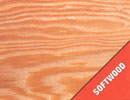 Douglas Fir Pseudotsuga taxifoila/P. menziesii. Grown in UK but principal source is North America. Used extensively in plywood and also for sea defence & structural work where its availability in large sizes is valued.
Douglas Fir Pseudotsuga taxifoila/P. menziesii. Grown in UK but principal source is North America. Used extensively in plywood and also for sea defence & structural work where its availability in large sizes is valued.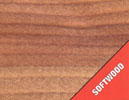 Parana Pine Araucaria angustifolia. Imported from Brazil in modest quantities, where it is mostly now of plantation origin. A high quality even grained softwood for joinery and plywood.
Parana Pine Araucaria angustifolia. Imported from Brazil in modest quantities, where it is mostly now of plantation origin. A high quality even grained softwood for joinery and plywood.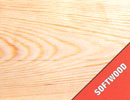 Scots Pine Pinus sylvestris. A major commercial softwood known by a variety of names according to origin: Baltic Redwood, European Redwood, or Polish, Swedish or Finnish Redwood, and Red Deal.
Scots Pine Pinus sylvestris. A major commercial softwood known by a variety of names according to origin: Baltic Redwood, European Redwood, or Polish, Swedish or Finnish Redwood, and Red Deal.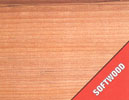 Western Red Cedar Thuja plicata. Some Western Red Cedar is plantation grown in UK but mostly it is imported from North America. Its distinctive red-brown colour is backed by a reputation for natural durability. Mostly used in smaller sizes for cladding, garden buildings, and similar exterior uses.
Western Red Cedar Thuja plicata. Some Western Red Cedar is plantation grown in UK but mostly it is imported from North America. Its distinctive red-brown colour is backed by a reputation for natural durability. Mostly used in smaller sizes for cladding, garden buildings, and similar exterior uses.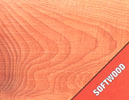 Yew Taxus baccata. A famous species which grows throughout Europe. The tree is usually of poor form from a commercial timber viewpoint, but is attractive appearance sees it used in the UK as decorative veneer. It is almost as hard as Oak.
Yew Taxus baccata. A famous species which grows throughout Europe. The tree is usually of poor form from a commercial timber viewpoint, but is attractive appearance sees it used in the UK as decorative veneer. It is almost as hard as Oak.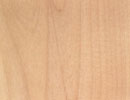 Alder Alnus glutinosa. Europe. Temperate. A softish lower density hardwood for smaller sized utility products. Not widely used.
Alder Alnus glutinosa. Europe. Temperate. A softish lower density hardwood for smaller sized utility products. Not widely used.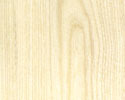
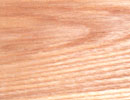 Ash, European Fraxinus excelsior. UK and Europe. Temperate. A wood renowned for its toughness and resilience, and used for tool handles, furniture, and fittings.
Ash, European Fraxinus excelsior. UK and Europe. Temperate. A wood renowned for its toughness and resilience, and used for tool handles, furniture, and fittings.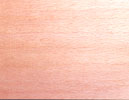 Beech Fagus sylvatica. UK and Europe. Temperate. One of UK's best known hardwoods. Widely used in furniture for legs and framing, where strength and smaller cross sections have to be combined. One of the best European woods for bending. Large volumes imported, especially from France and West Germany.
Beech Fagus sylvatica. UK and Europe. Temperate. One of UK's best known hardwoods. Widely used in furniture for legs and framing, where strength and smaller cross sections have to be combined. One of the best European woods for bending. Large volumes imported, especially from France and West Germany.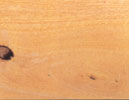 Boxwood, European Buxus sempervirens. Europe. Temperate. Very fine textured hard species used for specialised turnery, craftwork and sports goods. Not traded in big volumes.
Boxwood, European Buxus sempervirens. Europe. Temperate. Very fine textured hard species used for specialised turnery, craftwork and sports goods. Not traded in big volumes.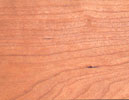 Cherry, European Prunus avium. Europe. Temperate. Although a fairly big tree, does not provide big timber and therefore, like most European 'fruit' woods, mostly only used for more specialised crafted furniture and decorative work. Not traded in large volumes.
Cherry, European Prunus avium. Europe. Temperate. Although a fairly big tree, does not provide big timber and therefore, like most European 'fruit' woods, mostly only used for more specialised crafted furniture and decorative work. Not traded in large volumes.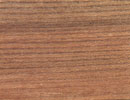 Elm Ulmus procera/Ulmus spp. Europe. Temperate. Domestic Elm in the UK suffered enormously from disease some years ago but still features in cabinet work and chairs, and in some outdoor uses including boat construction, and coffins.
Elm Ulmus procera/Ulmus spp. Europe. Temperate. Domestic Elm in the UK suffered enormously from disease some years ago but still features in cabinet work and chairs, and in some outdoor uses including boat construction, and coffins. 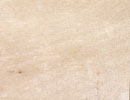 Holly Ilex aquifolium. Europe. Temperate. A very specialised wood only available in small sizes and restricted to inlay and craftwork. Traded in very small quantities.
Holly Ilex aquifolium. Europe. Temperate. A very specialised wood only available in small sizes and restricted to inlay and craftwork. Traded in very small quantities.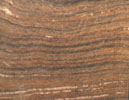 Lignum vitae Cuajacum spp. Central and South America. Tropical. Noted for its oiliness and hardness, it is used for special bearings, and in tools and sports goods. Imports are very small and the trade is very specialised.
Lignum vitae Cuajacum spp. Central and South America. Tropical. Noted for its oiliness and hardness, it is used for special bearings, and in tools and sports goods. Imports are very small and the trade is very specialised.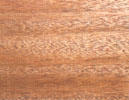 Mahogany, Brazilian Swietenia macrophylla. Central and South America. Tropical. The UK imports large volumes from Brazil. It is used for window and door frames, joinery and high quality furniture, and also in plywood.
Mahogany, Brazilian Swietenia macrophylla. Central and South America. Tropical. The UK imports large volumes from Brazil. It is used for window and door frames, joinery and high quality furniture, and also in plywood.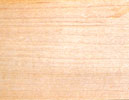 Maple, Rock Acer saccharum. N. America. Temperate. A fine grained, light colour, even wearing species, best known for high quality flooring, and other goods subject to abrading use. Import small and specialised.
Maple, Rock Acer saccharum. N. America. Temperate. A fine grained, light colour, even wearing species, best known for high quality flooring, and other goods subject to abrading use. Import small and specialised.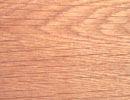 Oak, American White Quercus spp. North America. Temperate. Together with American Red Oak forms one of the biggest temperate hardwood imports for the UK. Used for joinery, furniture and fittings.
Oak, American White Quercus spp. North America. Temperate. Together with American Red Oak forms one of the biggest temperate hardwood imports for the UK. Used for joinery, furniture and fittings.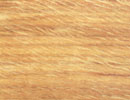 Oak, European Quercus robur and others. Europe. Temperate. One of the UK's major home grown species, but also imported in small volumes from a number of continental European sources.
Oak, European Quercus robur and others. Europe. Temperate. One of the UK's major home grown species, but also imported in small volumes from a number of continental European sources. 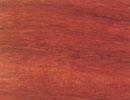 Padauk Pterocarpus spp. Africa, Far East. Tropical. There are at least nine species of Padauk, known for their attractive appearance. Trade with the UK is special ised and deals in very small quantities where decorative appeal and hard wear are called for.
Padauk Pterocarpus spp. Africa, Far East. Tropical. There are at least nine species of Padauk, known for their attractive appearance. Trade with the UK is special ised and deals in very small quantities where decorative appeal and hard wear are called for.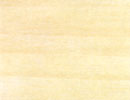 Poplar Populus spp. Europe. Temperate. There are a variety of species. They are light in colour and weight, and tend to be soft and non durable. Used for matches, turnery, small craft goods. Small imports by the UK.
Poplar Populus spp. Europe. Temperate. There are a variety of species. They are light in colour and weight, and tend to be soft and non durable. Used for matches, turnery, small craft goods. Small imports by the UK.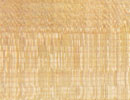 Sycamore Acer pseudoplatanus. Europe. Temperate. A white wood of fine grain suited for turnery and sliced veneers.
Sycamore Acer pseudoplatanus. Europe. Temperate. A white wood of fine grain suited for turnery and sliced veneers.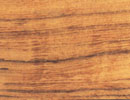 Teak Tectona grandis. Far East. Tropical. A golden brown species well known to all wood users. Prized for its durability and strength and stability, it is for used for highest quality furniture, joinery and garden furniture. It grows in natural forest in Burma and Thailand, but most of the UK's significant imports have been coming from plantations in Indonesia. Teak is grown in plantations in a number of tropical countries around the world.
Teak Tectona grandis. Far East. Tropical. A golden brown species well known to all wood users. Prized for its durability and strength and stability, it is for used for highest quality furniture, joinery and garden furniture. It grows in natural forest in Burma and Thailand, but most of the UK's significant imports have been coming from plantations in Indonesia. Teak is grown in plantations in a number of tropical countries around the world. 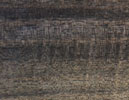 Walnut, American Juglans nigra. North America. Temperate. A high quality hardwood of distinctive appearance sometimes used in joinery and furniture and also for gun butts. Imports are very small.
Walnut, American Juglans nigra. North America. Temperate. A high quality hardwood of distinctive appearance sometimes used in joinery and furniture and also for gun butts. Imports are very small.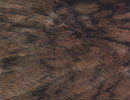 Walnut, European Juglans regia. Europe. Temperate. Pale brown with darker streaks. has historically been chosen for furniture because of its attractive appearance. Supplies are not plentiful and the UK imports are comparatively small.
Walnut, European Juglans regia. Europe. Temperate. Pale brown with darker streaks. has historically been chosen for furniture because of its attractive appearance. Supplies are not plentiful and the UK imports are comparatively small.  Willow Salix spp. Europe. Temperate. Willow is always associated with cricket bat manufacture in the UK. Its other uses include certain kinds of basket work, toys and other small items. Not used in big volumes.
Willow Salix spp. Europe. Temperate. Willow is always associated with cricket bat manufacture in the UK. Its other uses include certain kinds of basket work, toys and other small items. Not used in big volumes.